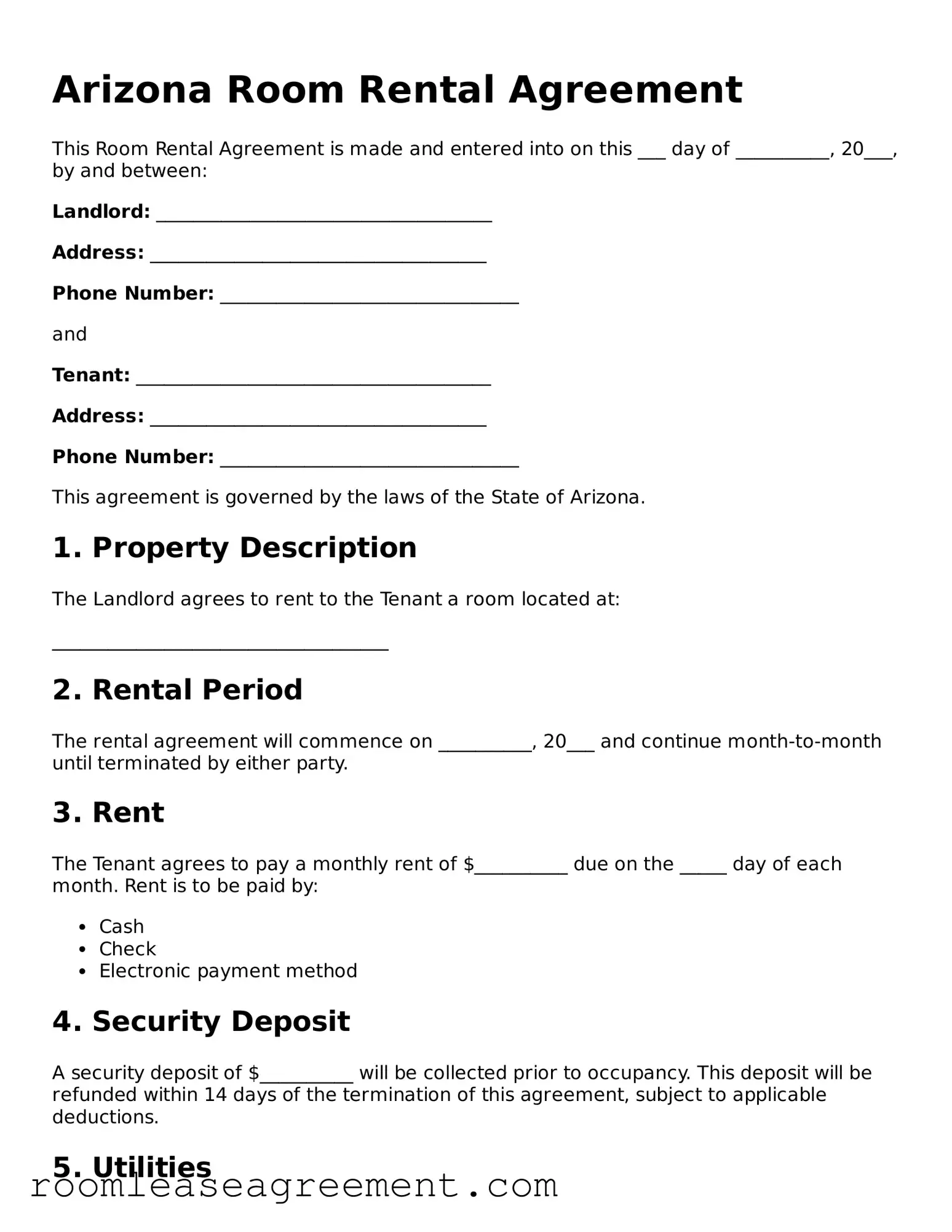Arizona Room Rental Agreement
This Room Rental Agreement is made and entered into on this ___ day of __________, 20___, by and between:
Landlord: ____________________________________
Address: ____________________________________
Phone Number: ________________________________
and
Tenant: ______________________________________
Address: ____________________________________
Phone Number: ________________________________
This agreement is governed by the laws of the State of Arizona.
1. Property Description
The Landlord agrees to rent to the Tenant a room located at:
____________________________________
2. Rental Period
The rental agreement will commence on __________, 20___ and continue month-to-month until terminated by either party.
3. Rent
The Tenant agrees to pay a monthly rent of $__________ due on the _____ day of each month. Rent is to be paid by:
- Cash
- Check
- Electronic payment method
4. Security Deposit
A security deposit of $__________ will be collected prior to occupancy. This deposit will be refunded within 14 days of the termination of this agreement, subject to applicable deductions.
5. Utilities
The following utilities are included in the rent:
- Electricity
- Water
- Internet
Any additional utilities will be paid by:
____________________________________
6. Termination
Either party may terminate this agreement by providing __ days written notice to the other party.
7. Additional Provisions
1. The Tenant agrees to keep the premises clean and undamaged.
2. No pets are allowed without prior written consent from the Landlord.
3. Subletting is not permitted without written consent from the Landlord.
8. Signatures
By signing below, both parties agree to the terms outlined in this Rental Agreement.
Landlord Signature: _________________________
Date: ___________________
Tenant Signature: __________________________
Date: ___________________
